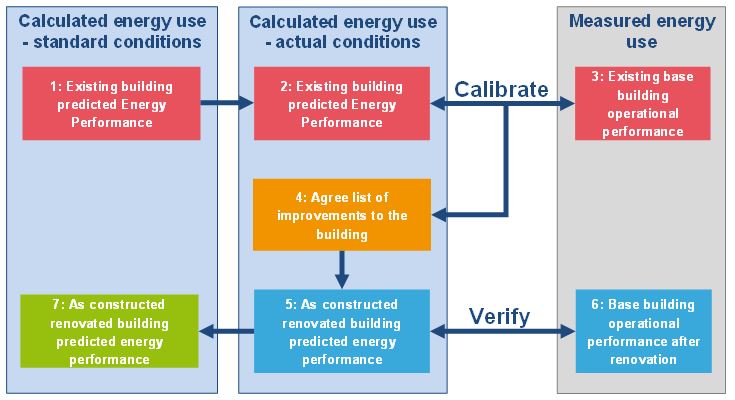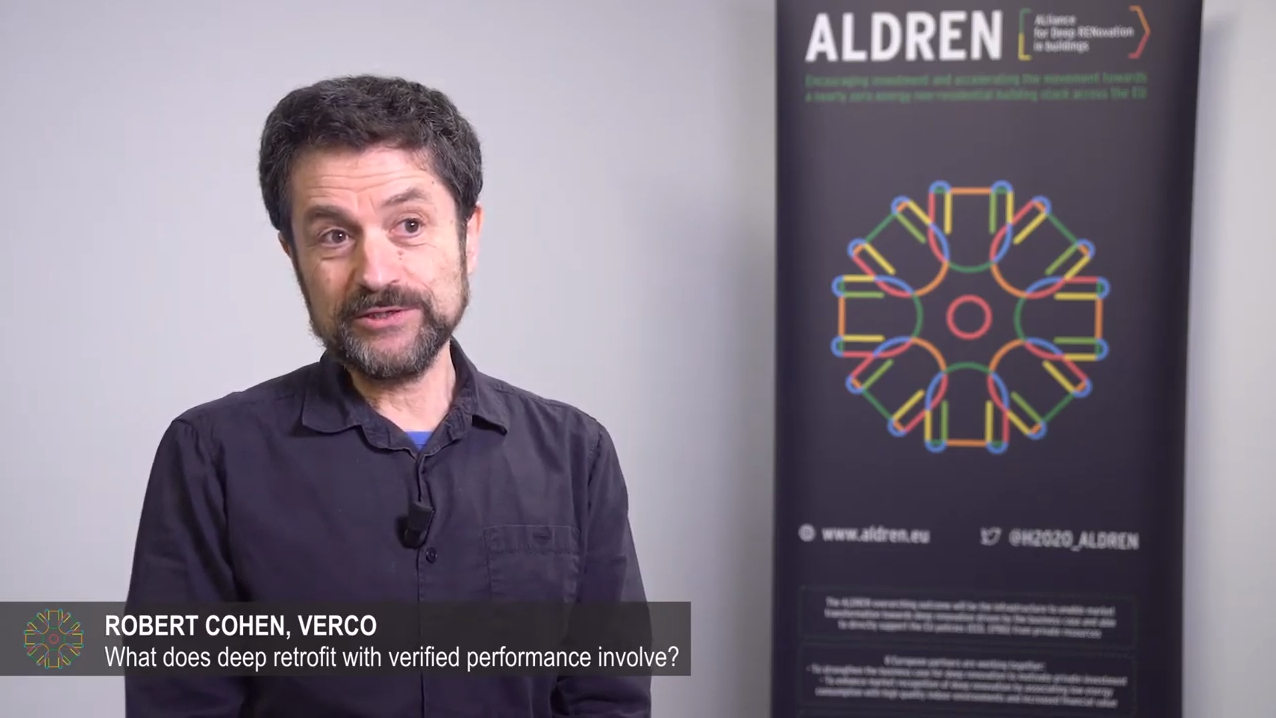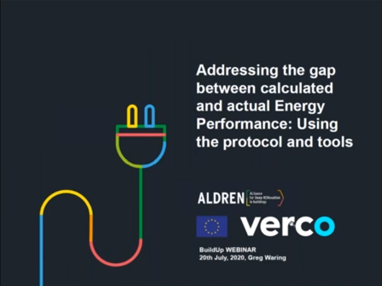ENERGY VERIFICATION

An energy Performance verification framework allowing actual (measured) performance to be compared with simulated (predicted) performance. It encompasses a “Design for Performance” protocol that sets out and tracks the actions required during the deep renovation process. It also includes a “Performance Verification Tool” (PVT) to compare predicted and actual performance at different levels of granularity.
A key attribute of the approach to be adopted by ALDREN is the idea of energy performance verification. This means that the energy performance predicted at the design stage of a deep renovation will be verified by measurements during the first year of full occupancy. The thesis of ALDREN continues that if we are going to start measuring the actual energy efficiency of buildings, then investors, developers and owners will want confidence that their renovated buildings will perform well.
Performance Verification protocol
The process proposed for ensuring the target energy performance of a deep retrofit is achieved and verified using measured data is illustrated in the figure below has these key steps:
- Calculate energy performance for existing building under standard conditions
- Calculate energy performance for existing building under actual conditions
- Measure existing building energy use, compare with predicted energy use and calibrate model to match measurements
- Use calibrated model to agree list of building improvements for fabric, plant, controls, etc.
- Calculate energy performance under actual conditions
- During first year of operation, compare measured vs calculated energy under actual conditions at monthly and sub-meter resolution
- Calculate “verified” energy performance under standard conditions for upgraded building

The ambition for verification of energy performance suggests an expectation that metered values will be close to the simulated targets, but there are three challenges:
- Inadequacies of models. Commonly used models required for regulatory compliance and EPCs are unlikely to predict energy use by sub-meter accurately.
- Inefficient building operation. Many (if not most) air-conditioned office buildings suffer from multiple imperfections in the way they are operated and controlled.
- Indoor environmental quality. Control settings in a real building may not match the specifications assumed in the model.
The ALDREN energy performance verification protocol proposes three ingredients to overcome these challenges:
- Dynamic thermal simulation of building design and HVAC system: During the design stages, simulation of the building and its HVAC system and controls, with a time step of one hour or less, should be undertaken to predict heating and cooling demands.
- Independent design review (IDR): An IDR should be undertaken by an independent and experienced energy efficiency professional.
- Continual alignment of actual building with the simulation model: At the start of the design stage, a Control Plan should be agreed which specifies which parties will be able to control the HVAC (landlord, tenants, hotel guests, etc.). By the end of the final design stage, a simple description of the controls which implements the control plan should be articulated in plain English in a Description of Operations (DesOps).
Conclusions
ALDREN proposes an energy performance verification protocol for deep retrofits of offices and hotels. It is anticipated that using detailed simulation of HVAC systems and their controls, alongside the dynamic thermal simulation of the building itself, for prediction and target setting, will enable performance outcomes to come close to matching design aspirations in air-conditioned buildings.
ALDREN PROJECT

© ALDREN. All rights reserved. Any duplication or use of objects such as diagrams in other electronic or printed publications is not permitted without the author’s agreement.
Read our LEGAL NOTICE – PRIVACY POLICY – COOKIE POLICY.




